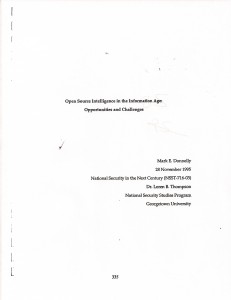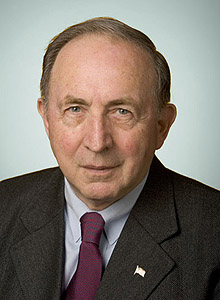
Without the leadership of then Capt Patrick Tyrrell, RN OBE, these handbooks would not exist today. He started the ball rolling, BGen Jim Cox, CA, then NATO and SHAPE Deputy J-2 organized a lecture to all the flag officers in charge of military intelligence, and finally directed SACLANT, then led by General William Kernan, USA, to create these first multinational doctrinal guides. Under the direct supervision of Admiral Sir William Pewone, RN, this was done over the course of two years. Below is the white paper and lecture that started it all.











